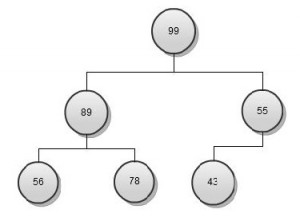Originally Posted December 24, 2007
The debate is old. But every now and then, we have to make a decision between using stored procedures and writing sql queries in code. When you are implementing sql queries for your database, you can either write them down in your code (again you can have different layers in your code and you can decide where to implement your sql queries, but that is different topic) or you can store them in database itself as stored procedures.
There are two schools of thoughts, one that will recommend going for stored procedure and the second will propose no stored procedures approach. I tried to understand the difference between the two approaches.
What is a stored procedure for a database? It is same as any procedure you create in your coding language, that takes some arguments, apply some logic, execute and returns back a result (if required).
As I already mentioned the debate is really old, so instead of reinventing the wheel, I will borrow the pointers from different sources and then try to add my thoughts to that
Stored procedures are secure: Stored procedure are secured against SQL injections. Are they totally safe? Isn’t it again the responsibility of person creating the procedure to make sure it is safe. Again, if I am writing queries in application layer (code), I can make sure the code is protected against the attacks.
Separation of data logic from business logic: All your queries which are interacting with database are residing over the database engine itself. This clearly separates all database interactions and hence make design more cleaner. One alternative will be to divide yourapplication layer into different parts, and keep data handling part completely separate from the rest.
A Disadvantage: Moving stored procedure from one platform to another can be tough, eg you decided to move from MSSQL to MYSQL, you may have recode all your stored porcedures. But this has a related advantage that if the front end language is changing, say you are moving from php to java, and your database is not changing then you don???t need to change the stored procedures.
Testing the app: Testing application with stored procedures can be a pain. Yes, as the changes are to be made in multiple places, your code as well as stored procedure. Now if database is handled by a different team, every time for a small change you have to communicate the changes and then test. This will take longer time than making changes just in your code as multiple teams are involved.
Stored procedure is faster: now that is debatable statement. I found this thing mentioned at many places that stored procedures as faster as the procedure is part of database engine itself and hence have faster access to database. Also you don’t need to send the complete query but just the procedure name. But as per my exp, I never faced any differences in terms of execution time with stored procedure.
Having considered all the points above, my personal opinion would be not to use the stored procedures especially in big application and if the same database is being used by multiple applications, because you don’t have complete control over the database and every time a change is made to a procedure it has to be communicated to multiple parties. In small applications and small teams one can use stored procedures as mostly same team has control of both database engine and code layer, so it is easier to coordinate and implement the changes.
http://codebetter.com/blogs/eric.wise/archive/2006/05/24/145393.aspx
http://www.tonymarston.net/php-mysql/stored-procedures-are-evil.html
http://codebetter.com/blogs/jeremy.miller/archive/2006/05/25/145450.aspx

